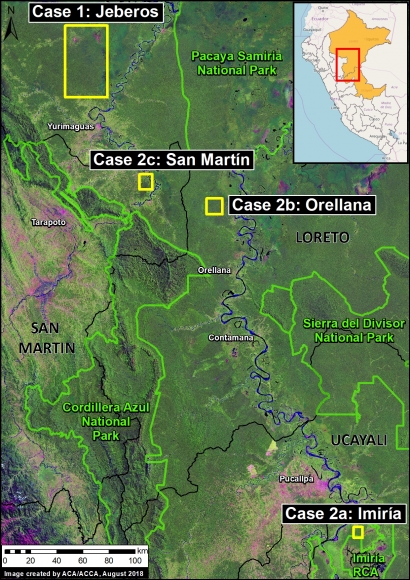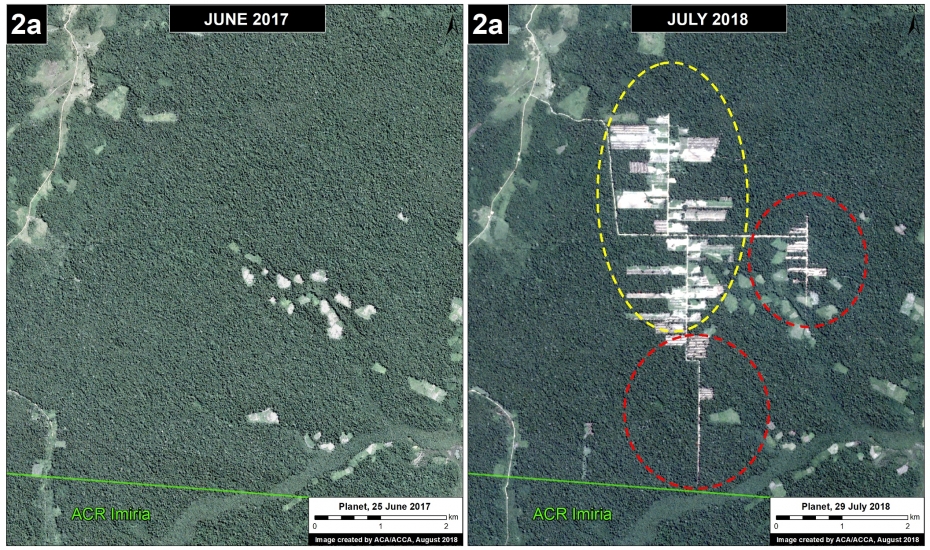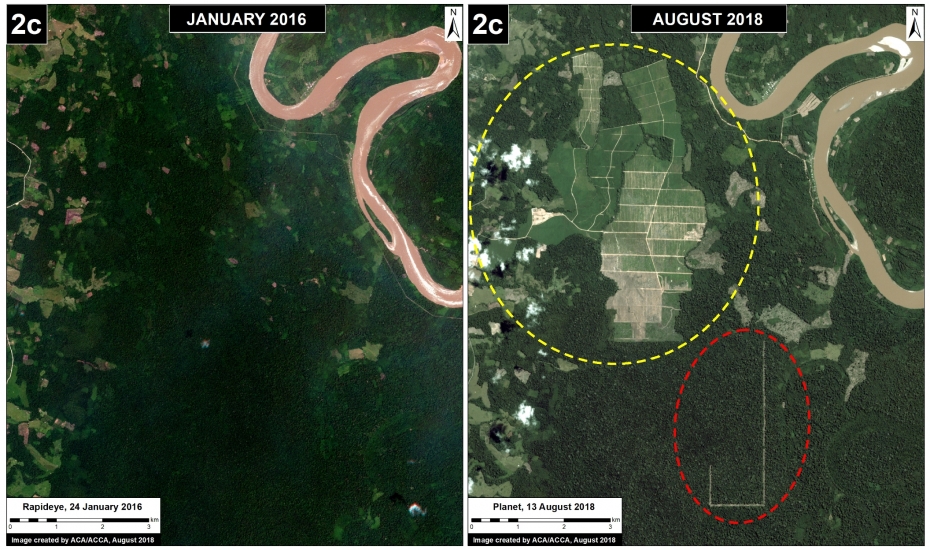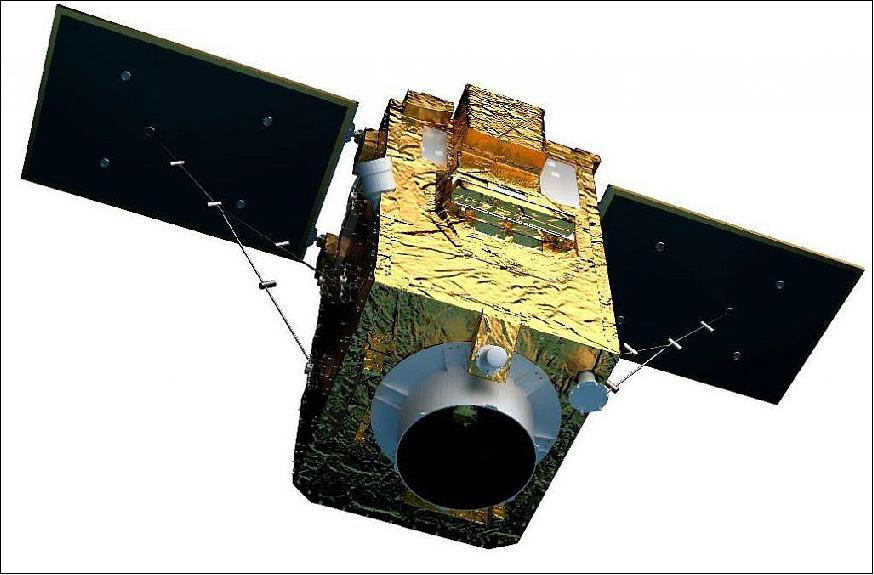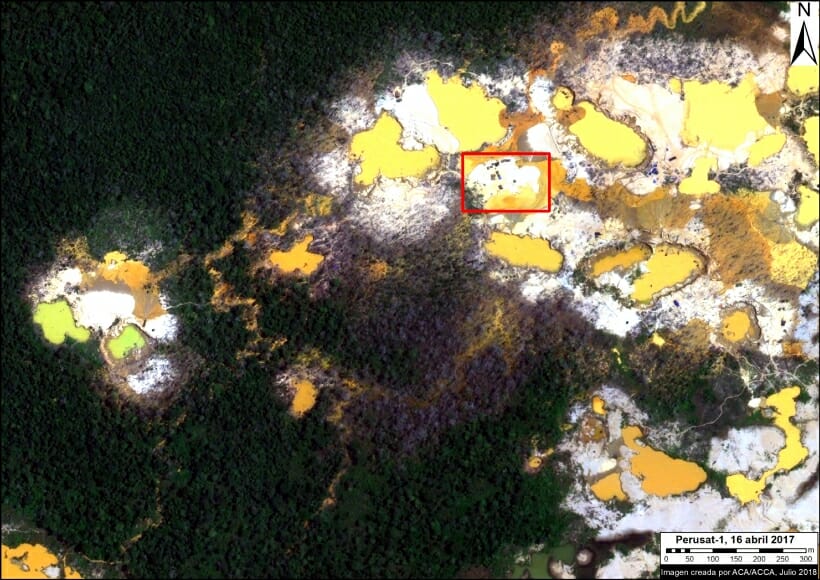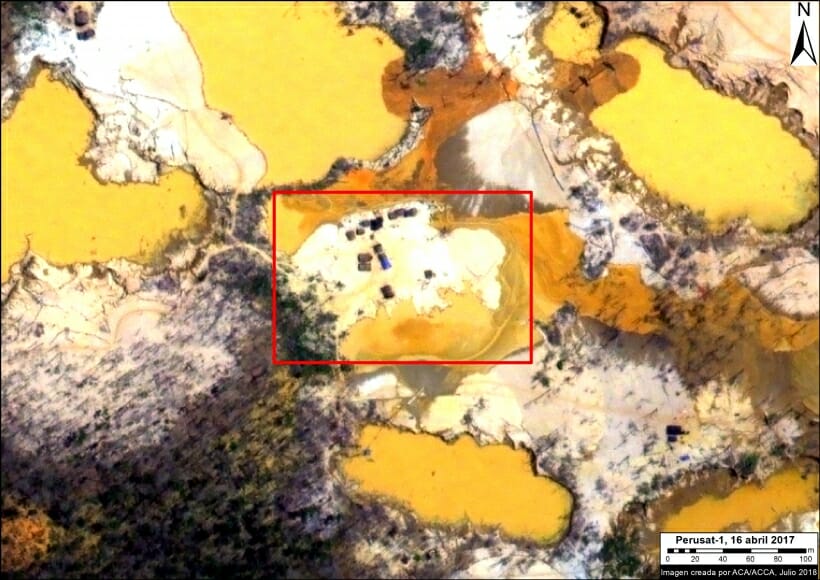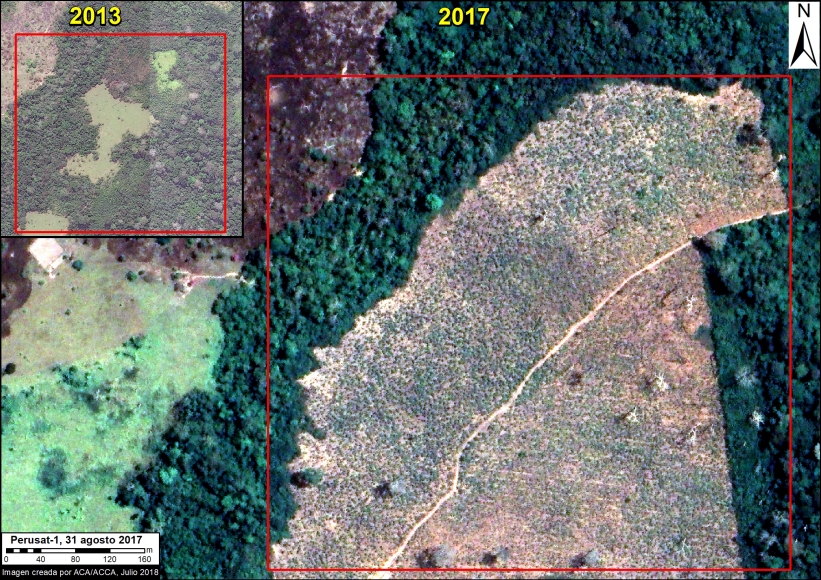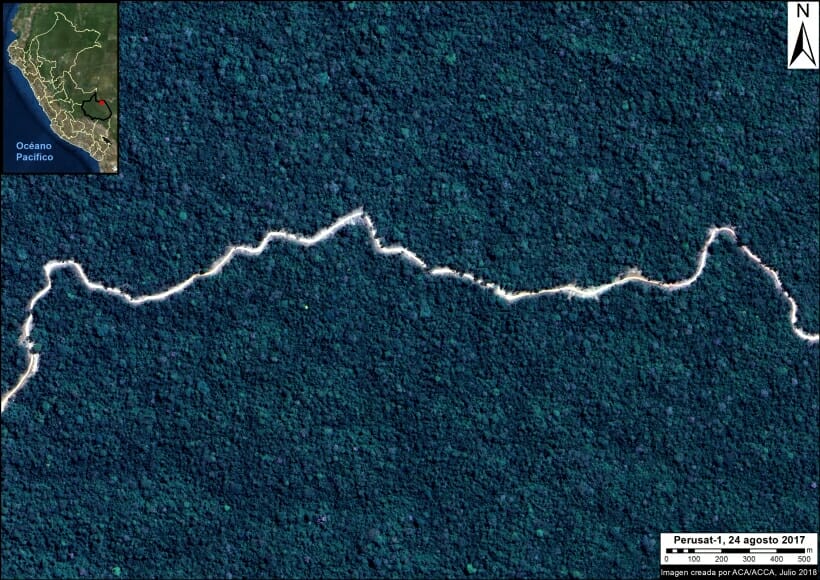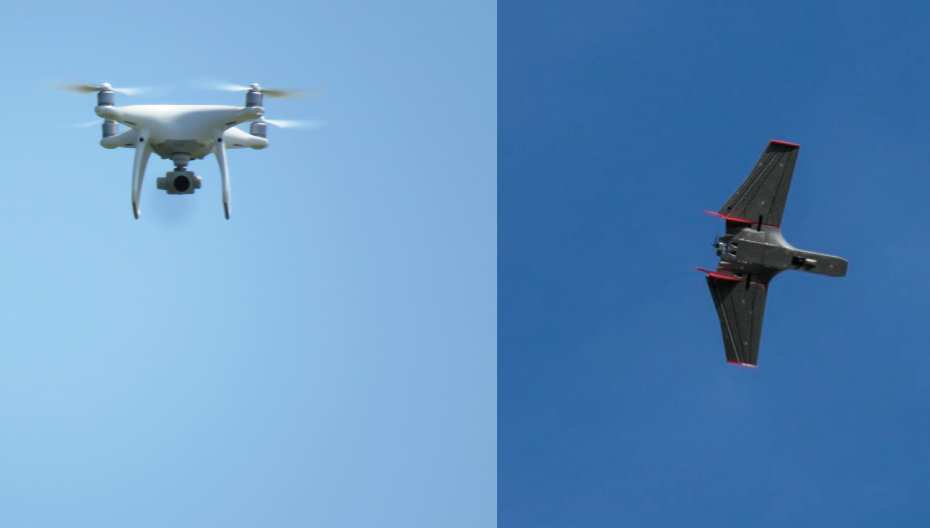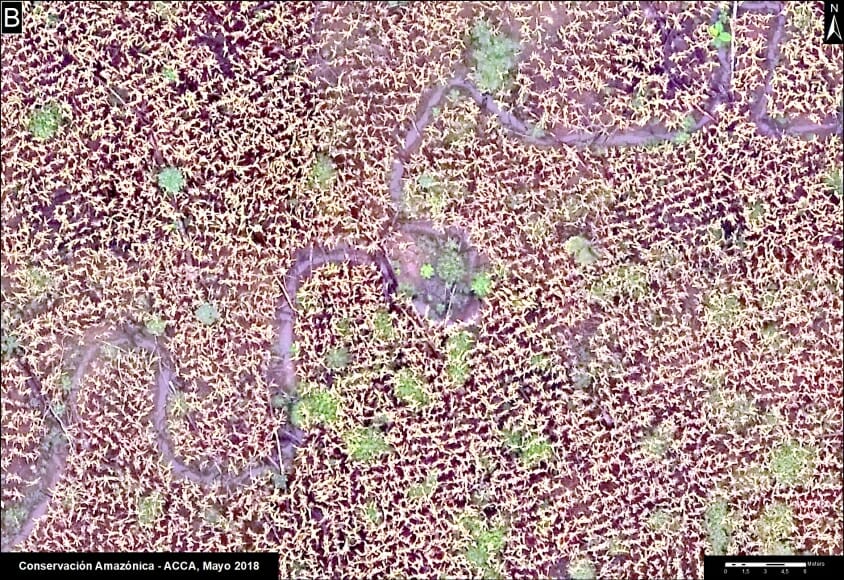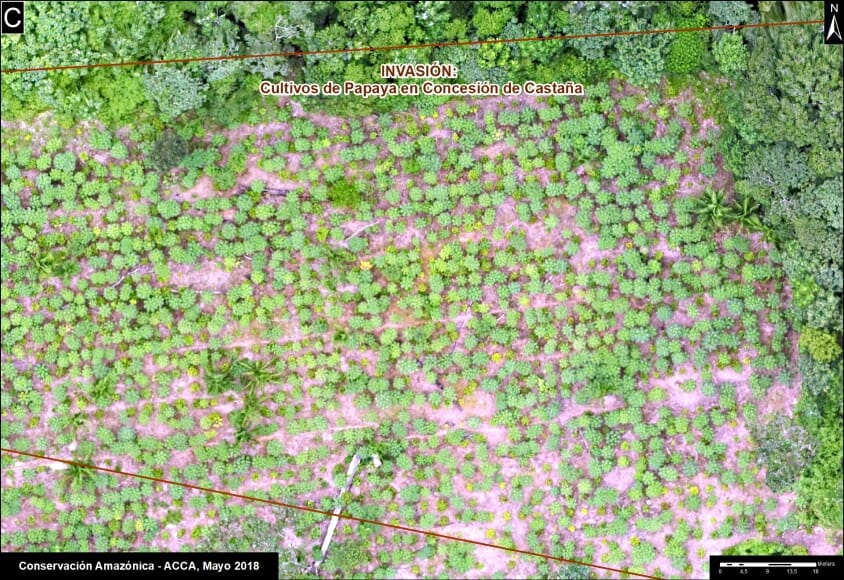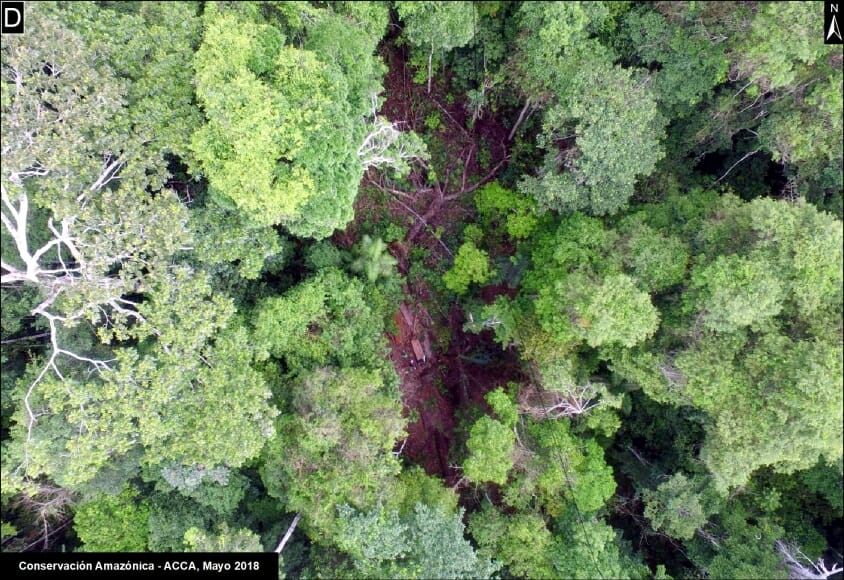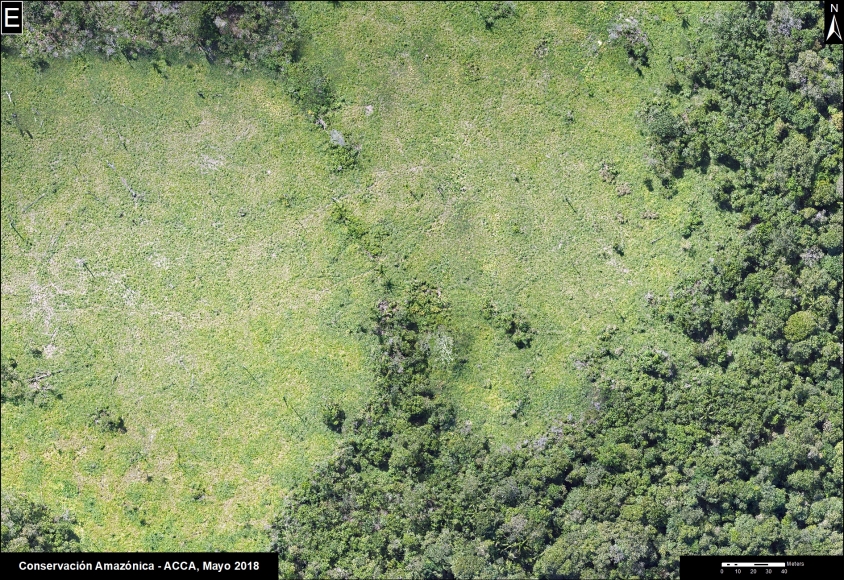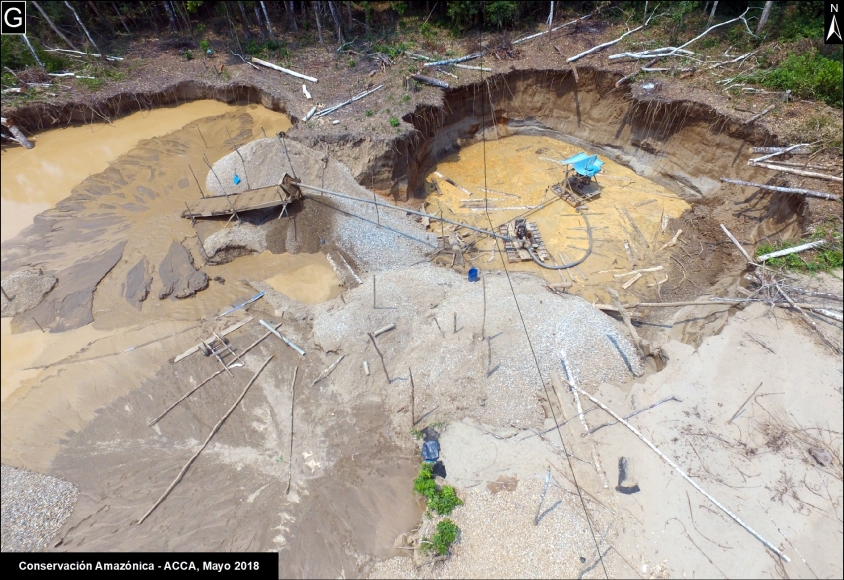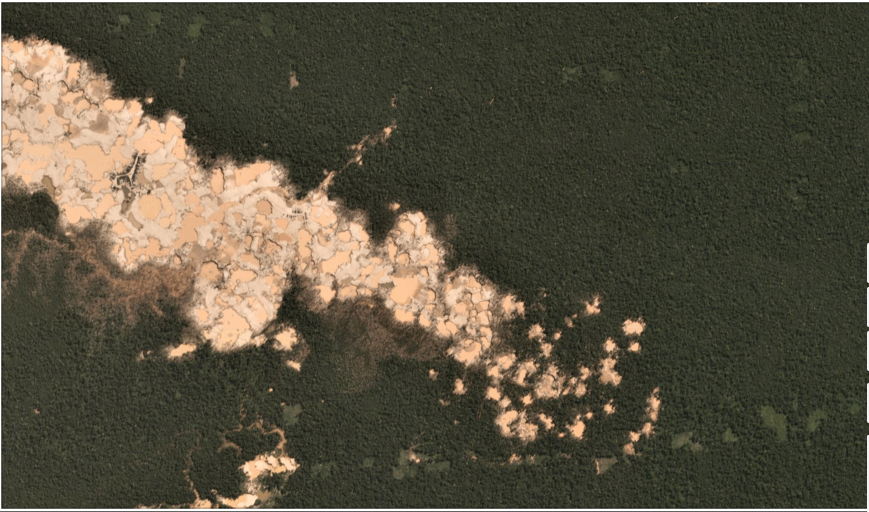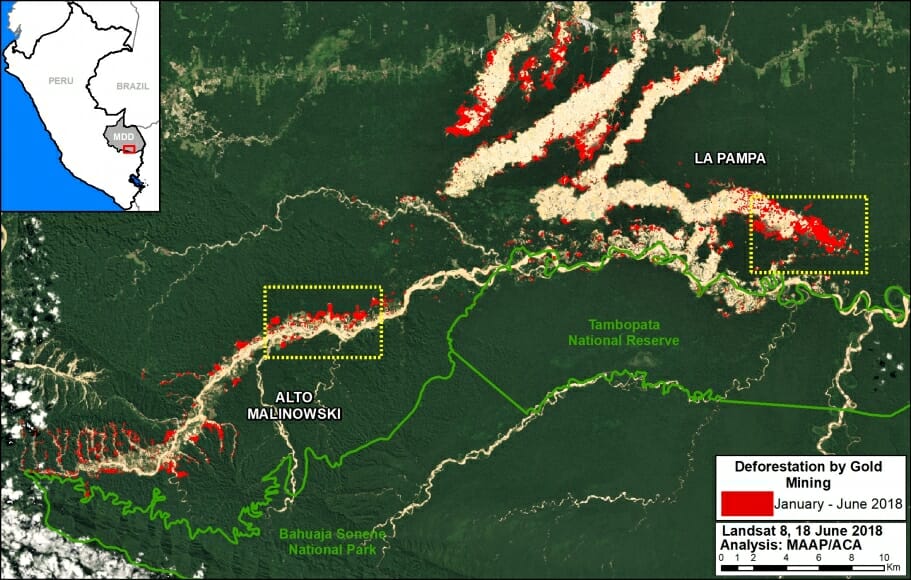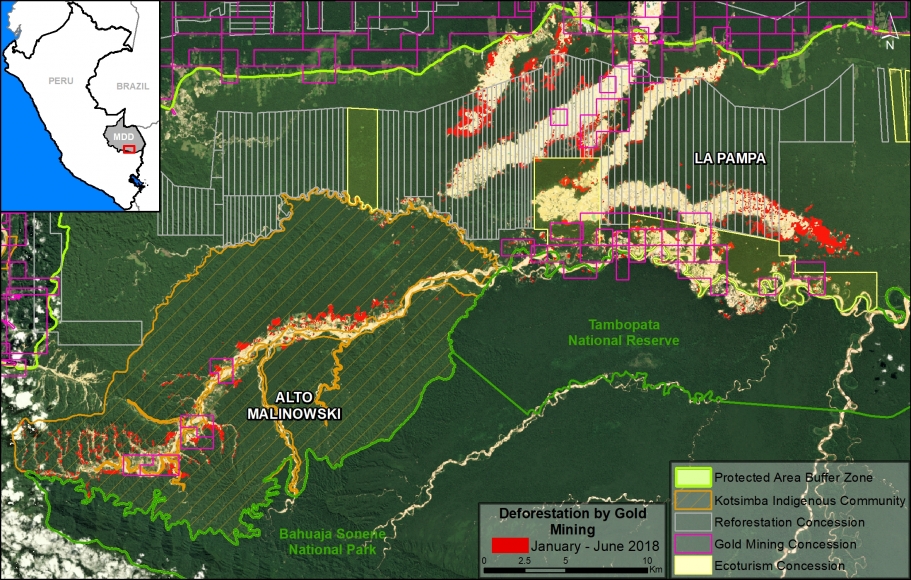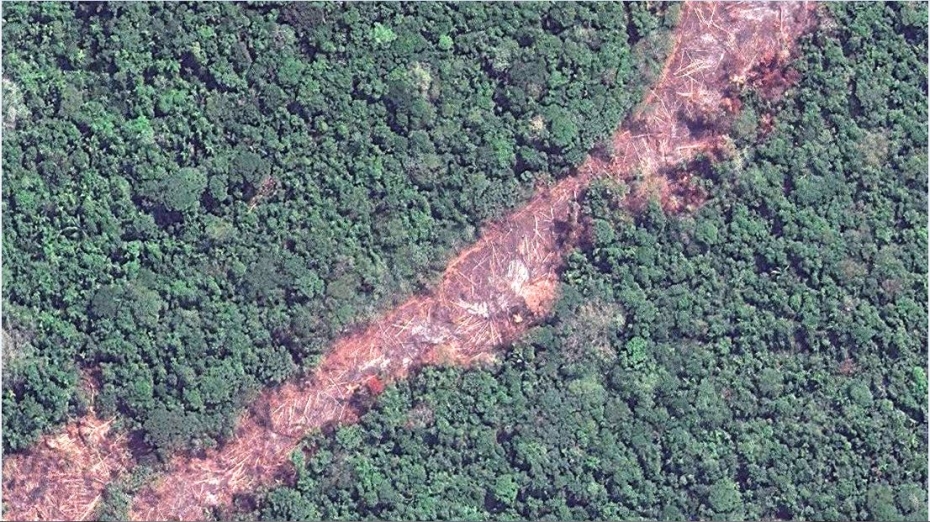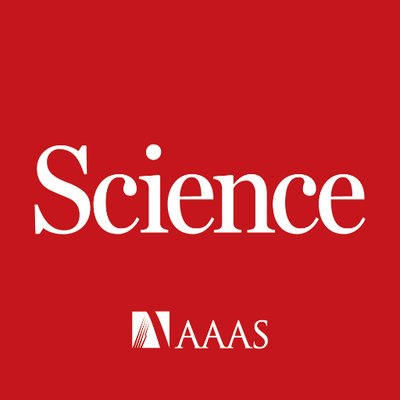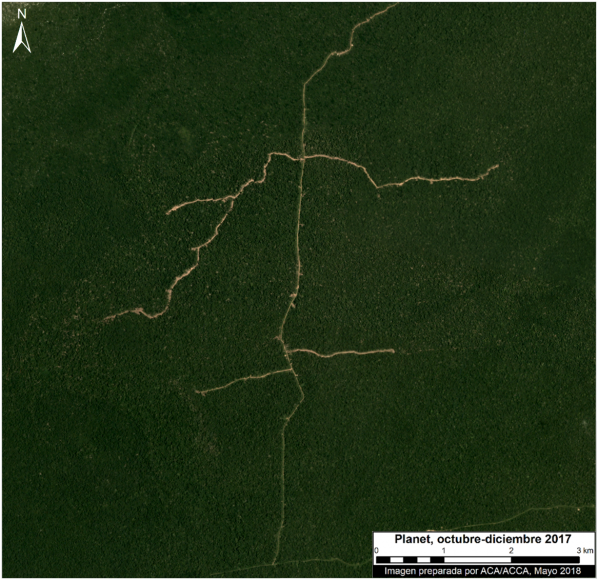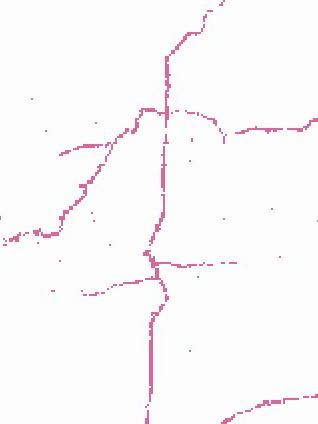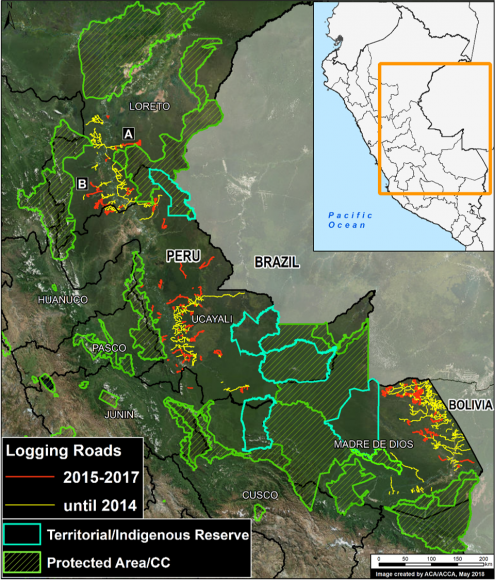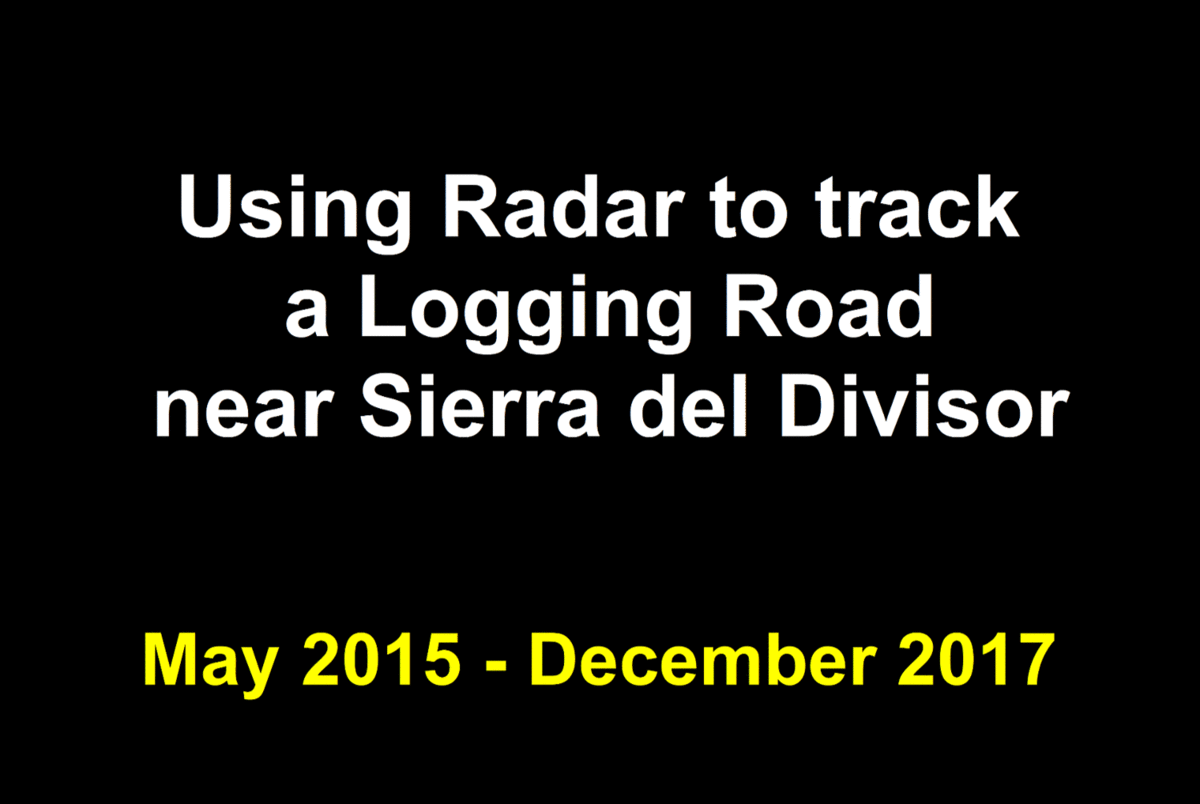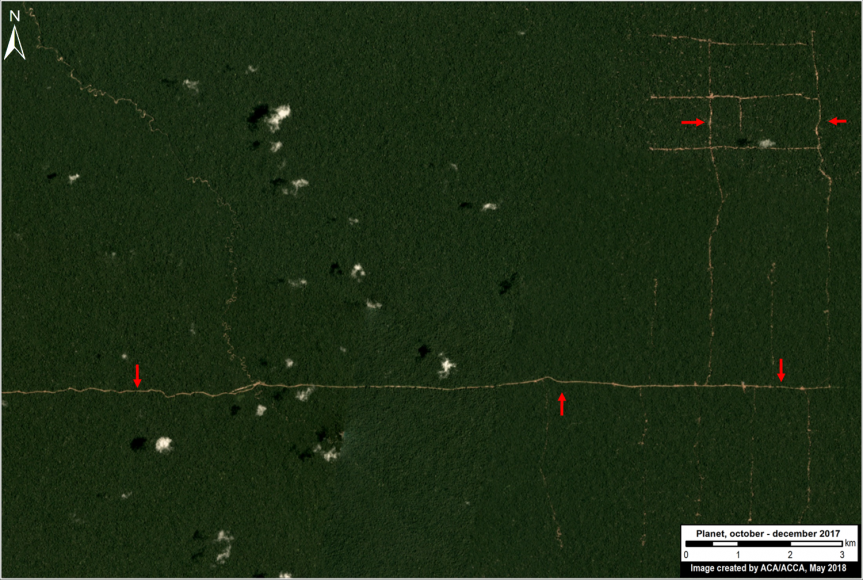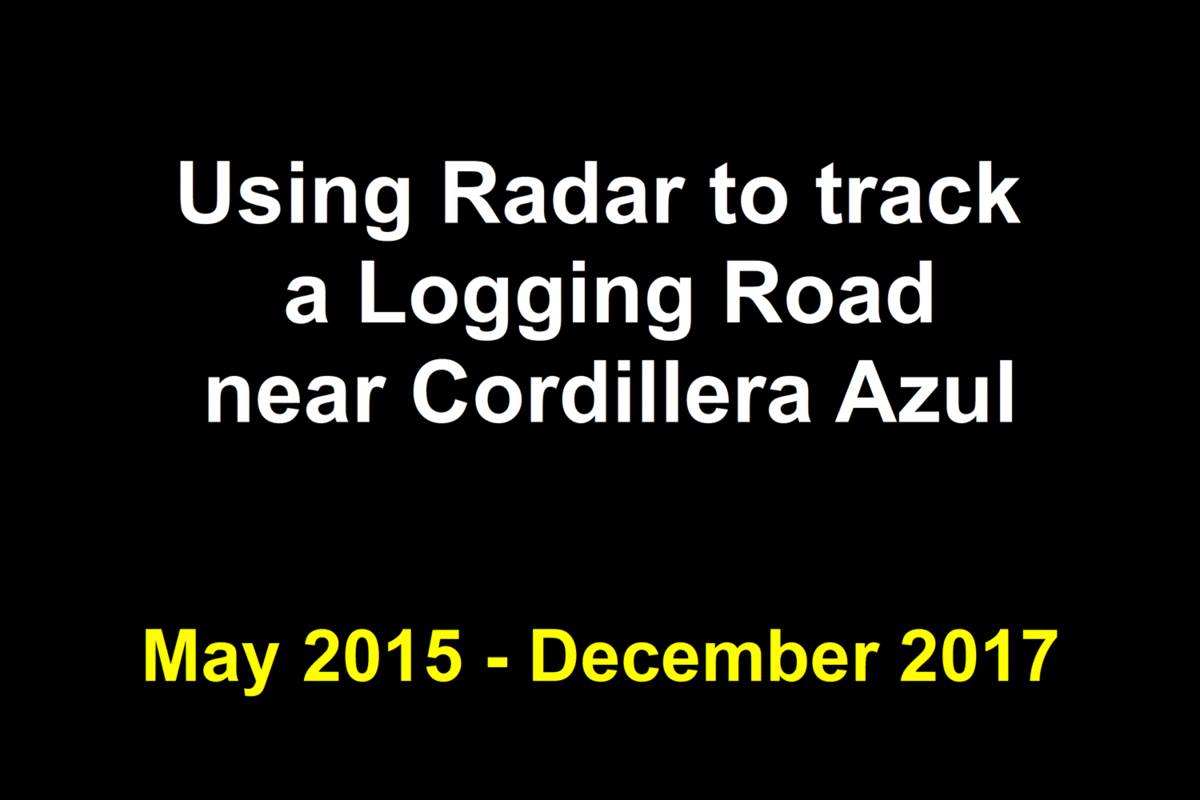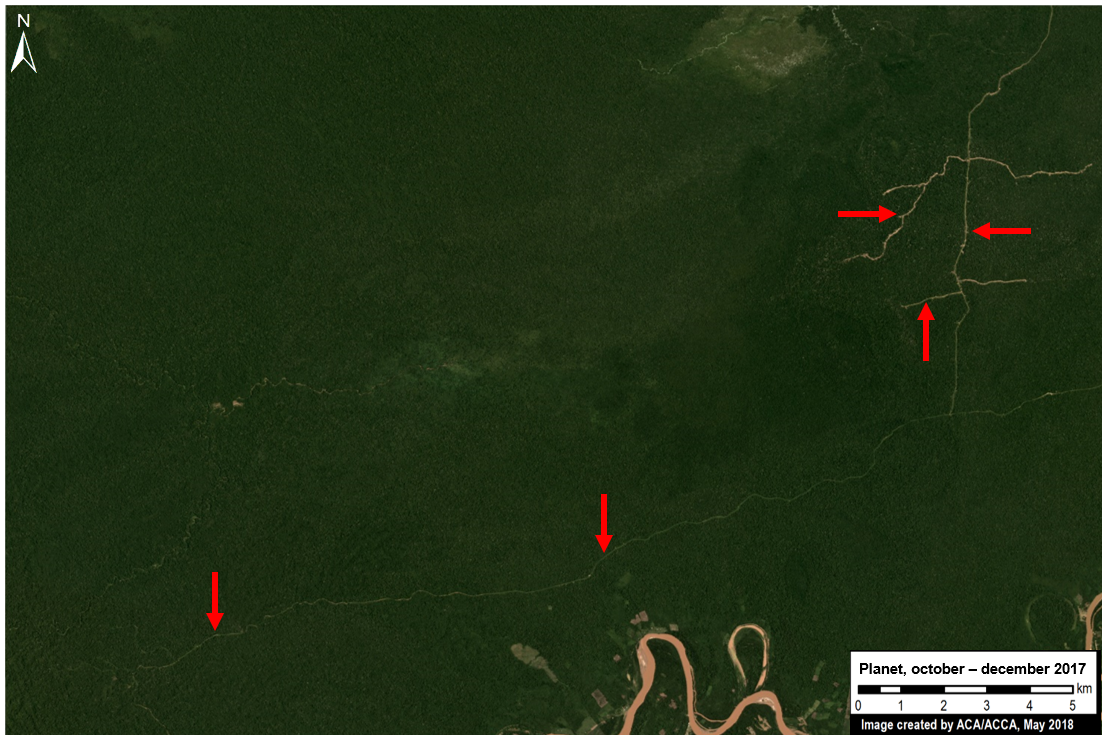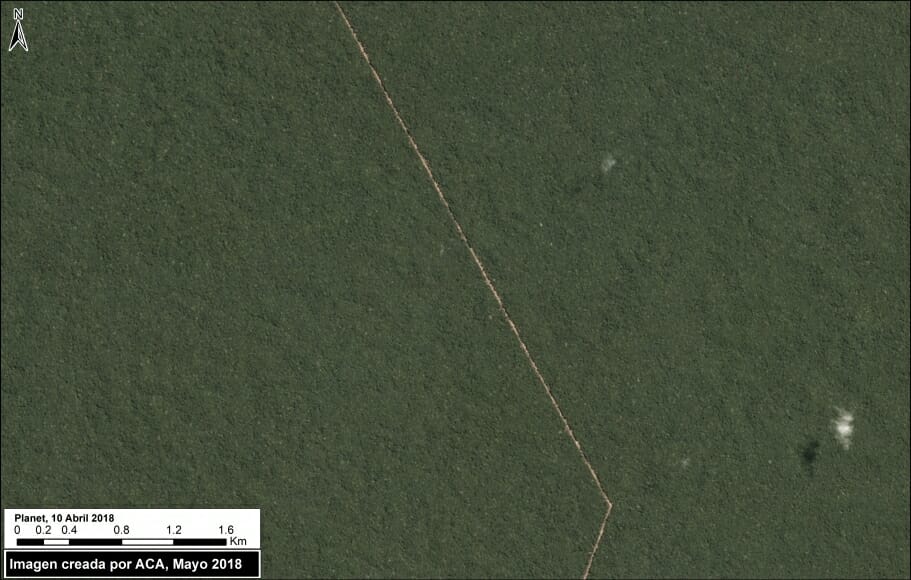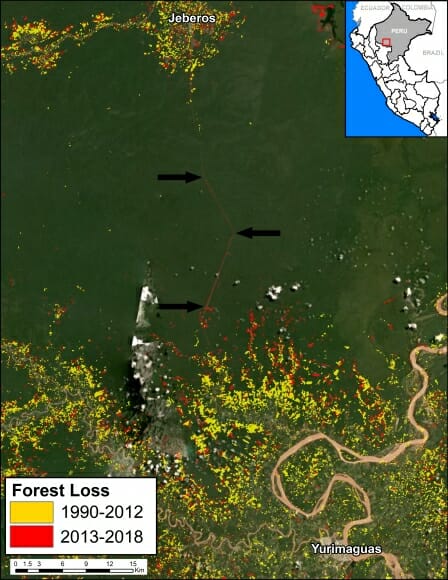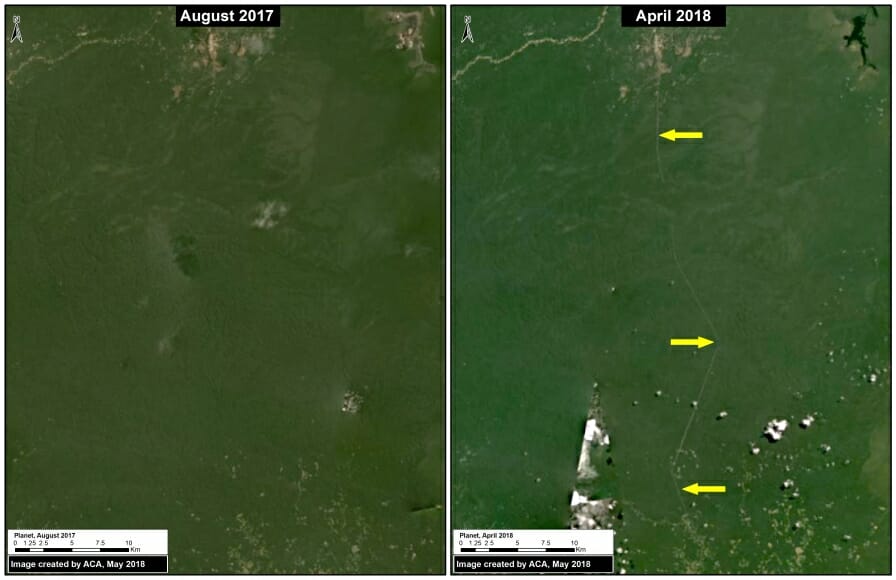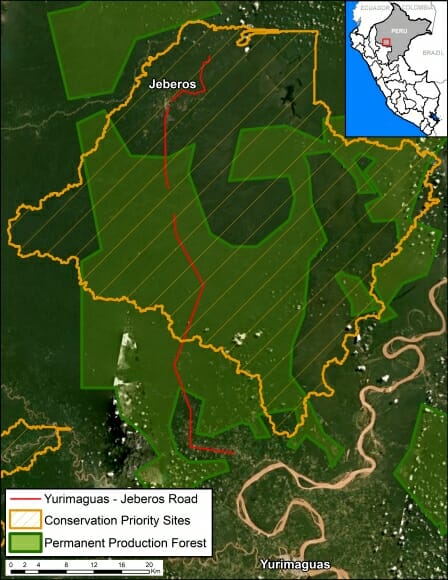In this ongoing series, we describe major new projects that may lead to the rapid deforestation of large areas of primary Amazon forest.
The first report (MAAP #84) described the deforestation associated with the construction of the Yurimaguas – Jeberos road (see Base Map), which crosses extensive primary forest and a priority site for conservation in the Loreto region.
The current report describes the deforestation associated with major agricultural expansion in three areas in the northern Peruvian Amazon, referred to here as the “Imiria,” “Orellana“, and “San Martin” cases.
These three cases are important because they present characteristics of large-scale, agro-industrial activities (linear plots organized around an extensive new access road network).
In all three cases, early warning alerts (GLAD/Global Forest Watch) initially detected the deforestation in 2017 (see MAAP #69) and their subsequent expansion in 2018. The total deforestation documented to date in these three cases is 3,600 acres.
Below, we show satellite images of the most recent deforestation due to agricultural expansion in these three areas. In these images, yellow circles indicate 2016-17 deforestation and red circles/arrows indicate the most recent 2018 deforestation.
Imiría case (Ucayali)
Just to the north of the Imiría Regional Conservation Area, we documented the deforestation of 872 acres between June 2017 (left panel) and July 2018 (right panel). In the following image, note the organized deforestation around a new access road network. The red circles indicate the most recent 2018 deforestation. Also, note that the access road just reached the boundary of the Imiría Regional Conservation Area. Regarding the cause of deforestation, a recent news article indicates that a nearby indigenous community (Ceylan en Masisea) has reported the expansion of industrial-scale rice plantations.
Orellana case (Loreto)
In the Loreto region, near the town of Orellana, we documented the deforestation of 902 acres between December 2016 (left panel) and July 2018 (right panel). In the following image, again note the organized deforestation around a new access road network. The red arrows indicate the new access roads built in 2018.
San Martin Case
In northeastern San Martín region, we documented the recent deforestation of 1,828 acres between December 2016 (left panel) and August 2018 (right panel) related to a new oil palm plantation. The red circle highlights the most recent 2018 deforestation, which indicates a major expansion of the plantation.
Coordinates
Imiria case: -8.733077,-74.369202
Orellana case: -6.569118,-75.357971
San Martín case: -6.26539,-75.800171
Citation
Finer M, Villa L (2018) New Deforestation Threats in the Peruvian Amazon (Part 2: Agriculture Expansion). MAAP: 92.
